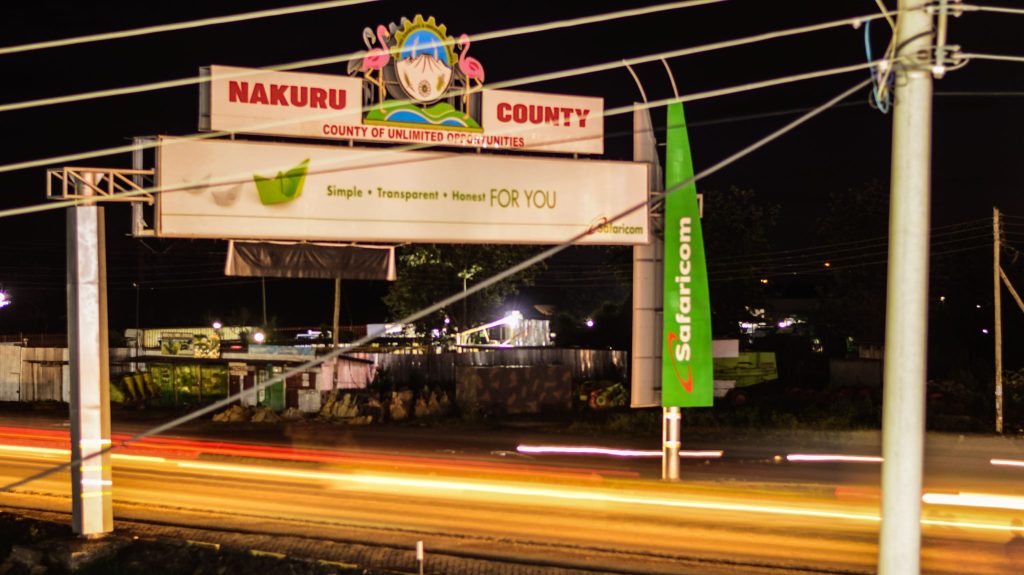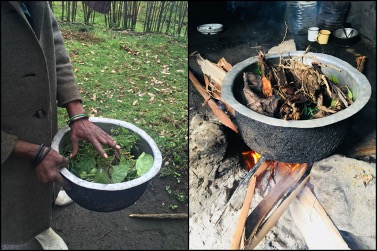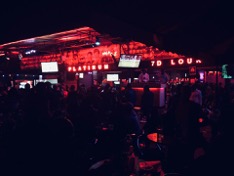
On the 21st of November 2020, Mumbi Seraki – a YouTuber – uploads a new ‘prophetic update’ titled ‘They’ve CANCELLED CHRISTMAS!’. Her YouTube shows are followed by more than 60 000 followers across Sub Saharan Africa and deal with, what she refers to as, the ills of society, the struggles of African nations and ideas for a better Africa. She opens her ‘prophetic update’ with the following statement:
“I really do pray that you are well in all your ways and that you are moving into living life truly on your own terms and out of the ‘matrix’, so that you can be free and you won’t have to become one of these mask wearing zombies walking around. Really, get out of the big cities, if you can, don’t wait till the last minute.”
Seraki’s statements should be interpreted against the background of the Covid-19 havoc that raises questions about how safe it is to live in major cities such as Nairobi where most Covid-19 cases are being reported. Nonetheless, the image of cities populated by ‘zombies’ affirms questions about the (in)habitability of Kenyan cities increasingly beleaguered by the pressures and absurdities of late capitalism that were already relevant way before the pandemic. Her advice to liberate oneself from the ‘matrix’ of life in the capital by moving upcountry is particularly intriguing and will be further unpacked hereinafter.
In this blogpost, I shed light on life ‘under pressure’ from the perspective of Nakuru, a vibrant secondary Kenyan city of approximately 500, 000 inhabitants situated 160 km Northwest of Nairobi, where I conducted more than 18 months of ethnographic research. My fieldwork shed light on how people in Nakuru made sense of their urban lifeworlds, yet did so with ‘heat’, a leitmotiv illuminating different ‘confrontations’ about a variety of opposing or cohesive uses, ideas and/or meanings of technologies, symbols, and substances that flow through the highland city.

Pressure as heat
Nakuru’s pivotal position between countryside and metropole fueled debates among its residents about, for instance, the t(h)reats of urban consumerism and the fears and anxieties provoked by the everyday encounters with contemporary technologies and infrastructures. It is in such debates that my interlocutors expressed economic ‘pressure’ in terms of affective encounters with various manifestations of increasing ‘heat’. Chemicals (kemikali) in processed foods, for instance, were interpreted by urban herbalists as ‘overheating’ stomachs. They consider rising cases of, for instance, obesity and diabetes as originating from the capital Nairobi which serves as the portal through which foreign (toxic) influences and lifestyles reach Nakuru. They introduce the stomach and gut as the toxic frontier where encounters with various others are metabolized and consequently argued for less dependency on imported foods that have a dulling effect on body and mind. The herbal medicinal interventions they propose serve as ‘cooling technologies’ to deal with what they consider as ‘toxic outsides’ that put pressure on urbanite’s health and well-being.

In a similar fashion, the ‘domestication’ of heat is also the premise on which Nakuru’s geothermal extractive industry is based that has been ongoing in Nakuru since 2008. By ’taming’ the heat of Menengai, a dormant volcano North of town, the Geothermal Development company (GDC) intends to ‘release pressure’ (Gikuyu, huhírio) from the existing energy infrastructures that fuel urban life. Geothermal exploration is presented as an indigenous unlimited source of energy and a first step toward a future in which Kenya depends less on the pressure of foreign fossil fuel imports. The geothermal ‘dream’ that is premised on the mastery over heat envisions – quite literally – brighter and more sustainable urban futures in which electricity is available at more affordable rates.
Kamau, one of my closest interlocutors born and raised in Nakuru, proudly summarized his hometown as the most vibrant secondary city in Kenya, a real ‘hidden hotspot’. He described how Nakuru prepares every Friday afternoon for its weekly transformation into ‘Nax Vegas’. Alluding to Las Vegas, ‘Nax’ is how Nairobian middle-class white collar workers running away from the metropole’s ‘heat’ and ‘toxicity’ call Nakuru. Around 3 pm on Fridays, roads into town are packed with cars from Nairobi. It is often in Nax where better-off metropolitan city dwellers spend their nights with “mipango wa kando” (women on the side) or ‘ben 10s’ (playboys), discuss business deals for ‘side hustles’ over some beers, and revitalize before returning to the perils of the metropole. Where Nairobi is considered a shamba ya mawe (a farm of stones), referring to the constant struggle and hassle, pastures are considered greener in Nakuru. Politicians gather there to decide on difficult matters, business ideas gain momentum and excesses often overrule scarcity as the ground is literally hot and untapped yet the atmosphere ambient and healthier than in the metropole.
This image of ‘hot’ potential opposed to ‘cooler’ atmospheres presents Nakuru as a place where pressure is experienced in multiple ways. The GDC’s efforts to domesticate Nakuru’s untapped heat, herbalists interventions to ‘cool’ stomachs and Nairobians blowing off steam over the weekend present the city as a place where pressure is respectively controlled, tamed and metabolized. It presents the city as a place not bound to dominant modes of existence and experiences of pressure that are specific to the metropole and therefore serves as a fertile site to think about notions of pressure beyond discourses limited to the megacities.
If the world is considered to be ‘overheating’ – a term anthropologist Thomas Eriksen uses to describe how the world is increasingly beleaguered by regimes of accumulation causing frictions between local lifeworlds and the ethos of globalized modernity – than the lifeworlds of my interlocutors in Nakuru are exemplary for how this heat is given sense and accordingly dealt with.
A place of ‘venting’ (huhírio)
A civil servant by the name of Gitonga who grew up in Nakuru and helped me out with my research clearances referred to the region with the Gikuyu idiom huhírio, denoting the passing of air, ‘venting’ or a ‘chimney’ and used to describe Nakuru as a place to release pressure. His use of ‘venting’ in reference to Nakuru encapsulates how middle-class Nairobians think about their urban lifeworlds ‘under pressure’ in need of occasional venting.
Gitonga’s use of huhírio is also closely related to notions entailing ‘a good life’ or ‘cool life’ (maisha poa). Talking about what a good life entails, Kamau gave the example of his siblings in Nairobi. They were hard-working middle-class metropolitans who earned a fair amount of money, owned a nice car and did not mind spending money during evenings out or holiday retreats upcountry. Their ultimate aspiration though – similar to the one of Kamau – was to live a ‘cooler’ good life (maisha poa) upcountry, away from the heat (moto) of the metropole. “A self-sustainable ‘kienyeji’ (local, organic) life in a nice upcountry house overlooking a lake”, he told me once. Although Kamau regularly enjoyed nightlife, beers and hard work at his sister’s law firm in Nairobi, he confided that the capital city also increasingly drained his energy, a sentiment he shared with many of my interlocutors. He considered life upcountry more relaxed. “In the end”, he argued, “don’t we all want a good life in which we are responsible ourselves about what we become and who we are?”

Gitonga’s notion of huhírio and Kamau’s aspiration for ‘a good life’ hint at modes of habitation specific to smaller provincial cities such as Nakuru in which urbanites are still more in control over their own being and becoming. Perhaps this is what Dr. Mumbi Seraki alludes to when she suggests ‘escaping the matrix’ of the metropole. It entails, what she referred to as, ‘being woke’ about the increasing pressure that urban lifeworlds cause. Pressure that can have devastating effects on one’s health and wellbeing.
Some of my interlocutors diagnosed those who had ‘lost it’ (akili imechoma, ‘their brains are cooked’, a ‘burn-out’ as a result of the city’s pressure) as being in a state of ‘moving in circles’ (Gikuyu, gīthīūrùrī), wandering around aimlessly (cf. Seraki’s city full of zombies). Constantly dealing with the contingencies of urban lifeworlds requires new kinds of knowledge and expertise on how to ‘vent’ (huhírio) or ‘metabolize’ (in the case of food chemicals) urban pressure. I therefore suggest smaller provincial cities such as Nakuru as ideal places where new ‘critical knowledge’ about how to deal with increasing urban pressure experienced as heat seems to originate from.
Pressure as a dialectical atmosphere
Although Nakuru is rapidly growing and seeking to become officially recognized as a ‘city’ instead of ‘town’, its pivotal position in between urban and rural lifestyles and gentle climate and proximity to Nairobi make it the ideal getaway place for the Nairobian middle-class to rejuvenate from Nairobi’s hardship. Nakuru from the perspective of Nairobi thus appears as a place to unwind and ‘cool down’ (-poesha).
Yet, reality is far more complex and nuanced. Nakuru’s increased exposure to the influx of Nairobi, the ongoing competition between Nakuru and other urban centers to establish themselves as ‘worldly cities’ fuels debates about which future the vibrant Highland town aspires.
In this regard, Alya, Nakuru’s women and youth liaison working with the county government, raised the concern that Nakuru has been too much absorbed by Nairobi and struggles to define a proper identity as a city. According to her, billboards are the most obvious example. She explained that the advertisement industry does not target a Nakuru crowd but portrays Nigerian musicians or models from Nairobi while there are many talented youths in Nakuru fit for the job. Nakuru youths do not necessarily identify themselves in the lifestyles these billboards portray.
Alya’s concerns present billboards as what Fehérváry calls ‘displaced metonyms of another world’ or lifeworlds experienced by Nairobians and residents of other metropoles in Africa rather than the ones lived by Nakuru’s wananchi (common citizens). They exemplify how lifeworlds in Nakuru are increasingly put under pressure to live up to the expectations of the metropole.
Building upon the conceptual framework that undergirds this blog series, I consider ‘pressure’ in Nakuru to be ‘understood as a tangible affect produced in and through specific geographies, temporalities and social and economic relations’. Pressure in Nakuru indeed manifests itself in different ways according to the vantage point of the observer. From the point of view of Nairobi, Nakuru’s soil is ‘hot and untapped’ while the atmosphere is literally ‘cooler’ and more ambient, portraying the provincial city as a place where both new economic opportunities are exploited and where pressure is released and stress coped with. Taking Nakuru as a vantage point, however, the spectral realm of billboards and newly built infrastructure in the rapidly growing secondary city betray a renewed focus on the metropole Nairobi with its ‘worldly’ lifestyles and ‘tall buildings’ emblematic for maendeleo (Kiswahili: ‘progress’ or ‘onward movement’). This spectral saturation of ‘elsewheres’ causes all kind of anxieties and worries among youngsters in Nakuru to live up to the expectations the metropole portrays.
Take Kamau and his peers for example. They were often stressed whether to follow Nakuru’s spirit of growth and worldliness as portrayed by the city’s material environment or to pave their own ‘desire paths’ less influenced by economic pressure from the city. They were, what they called, ‘tarmacking’, paving their own roads, zigzagging through and across the city in search of new opportunities. Tarmacking not only serves as a means of getting by but also implies a spatial and temporal trajectory to move forward along and across Nakuru’s urban infrastructure in ways that deviate from the established urban form and (social) routes.

In Nakuru, ‘pressure’ and its opposite: ‘venting’ seem to be in a dialectical relationship with one another. On the one hand, the city appears to be a place where better-off Nairobians release pressure and tap into Nakuru’s economic potential while on the other hand their presence (be it physically or their lifeworlds and lifestyles portrayed in billboards) increases negative pressure on Nakuru’s aspiring youth in terms of expectations and lifeworlds they struggle to live up to.
Pressure in Nakuru is thus best described as a double bind: an affective encounter between cities, substances and symbols. Its manifestation should be interpreted as a multicausal phenomenon that cannot easily be compartmentalized into one kind of form or narrative. Pressure could be food chemicals’ effect, billboards portraying foreign ideals or subterranean heat allowing greener energy futures. These examples present Nakuru as a place where pressure manifests itself as a highly volatile and affective state of being that is rich in meaning about what it means to (de)pressurize beyond the megacities.
Nick Rahier is a doctoral researcher of the Institute for Anthropological Research in Africa (IARA) at the University of Leuven, Belgium. His research interests include technology worlds, energy culture, urbanity, healing and herbalism. He is currently working toward a doctoral dissertation on urban life in Nakuru inspired by different manifestations of ‘heat’ in the city.
Headline photo by Ben Omwaka, Nakuru’s city photographer.
[…] (De)pressurizing in urban centers beyond the megacity: notes on pressure from Nakuru, Kenya. Written by Nick Rahier, this post sheds light on life ‘under pressure’ from the perspective of Nakuru, a vibrant secondary Kenyan city situated 160 km Northwest of Nairobi. It presents Nakuru as a place where pressure manifests itself as a highly volatile and affective state of being that is rich in meaning about what it means to (de)pressurize beyond the megacities. […]
LikeLike